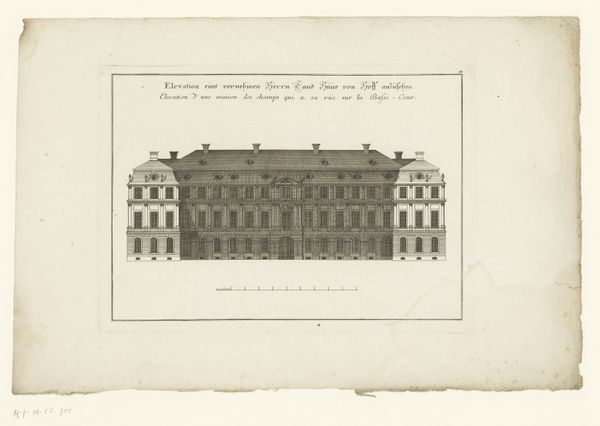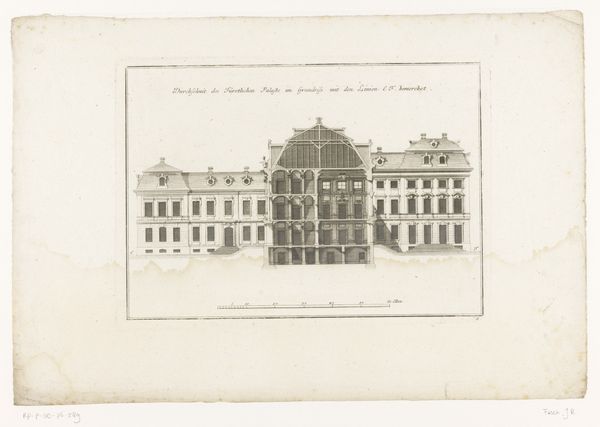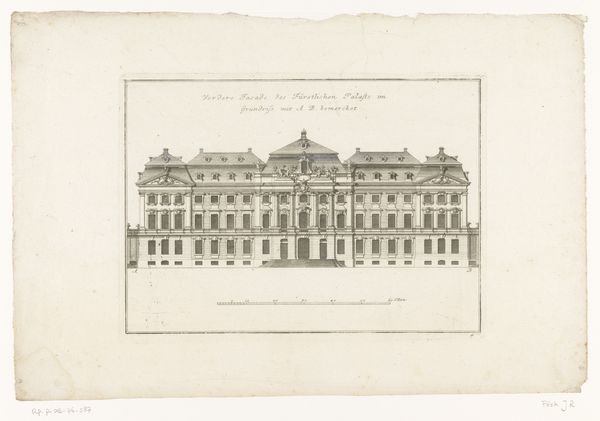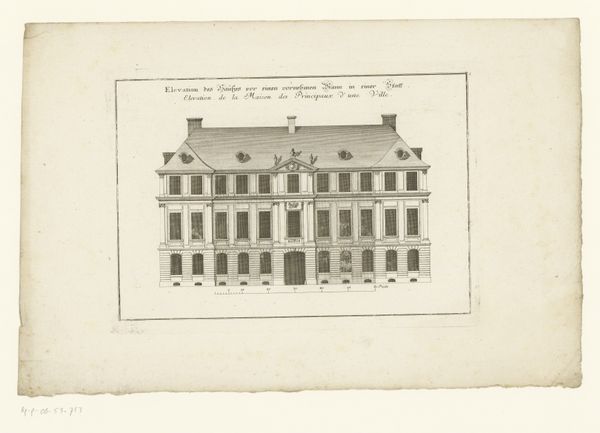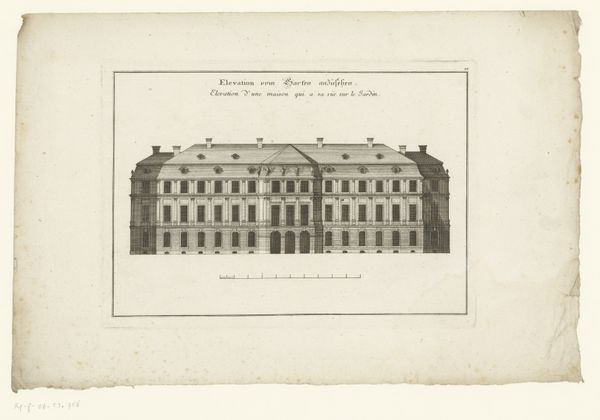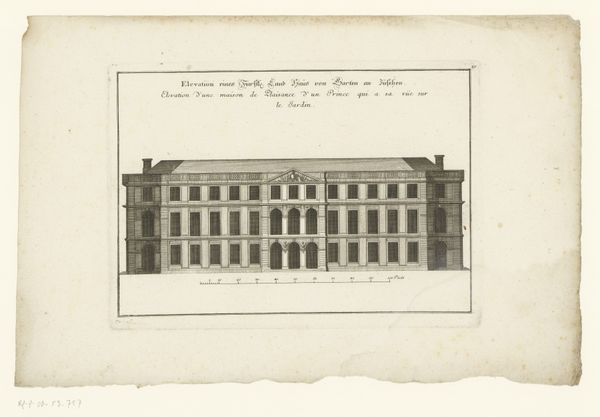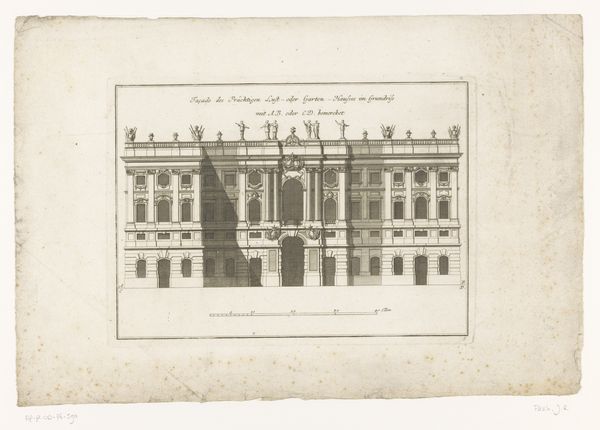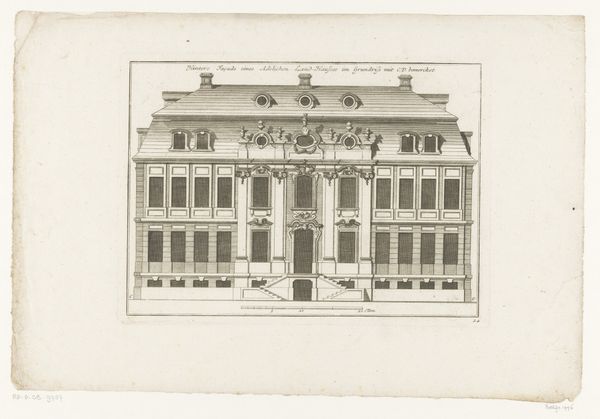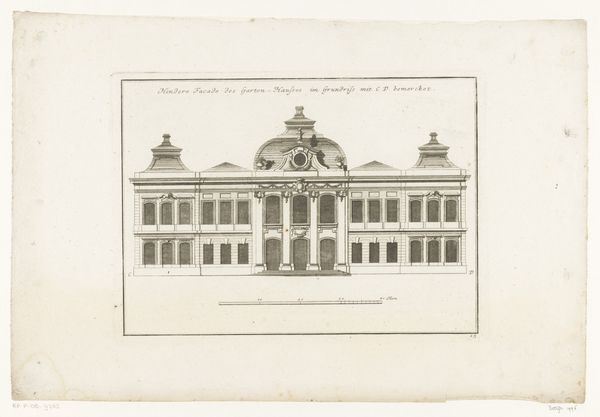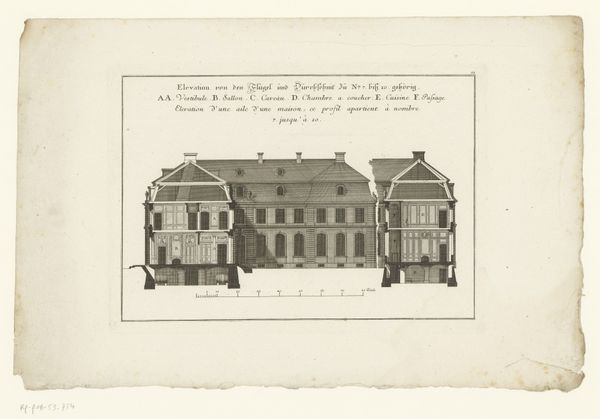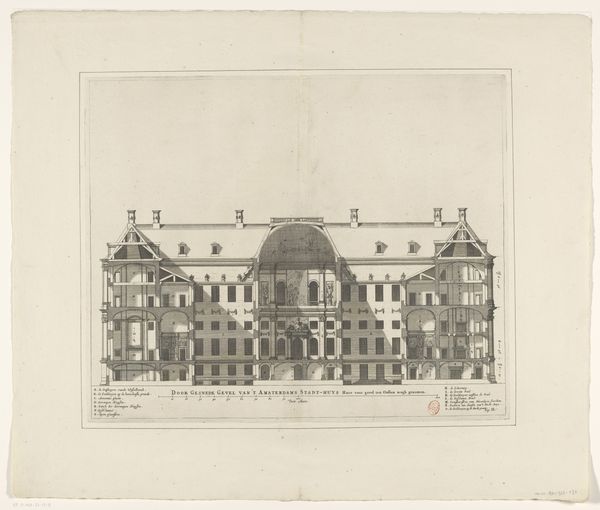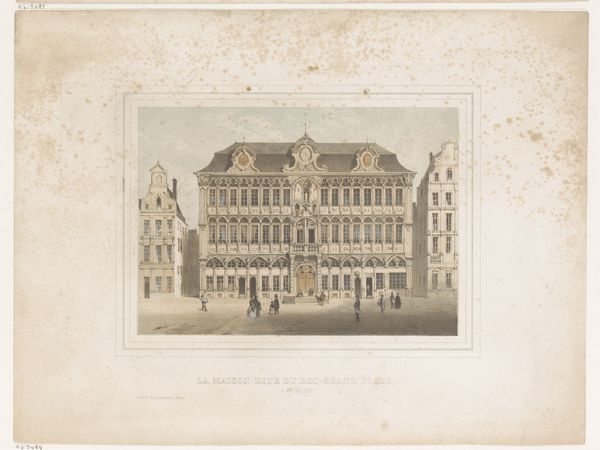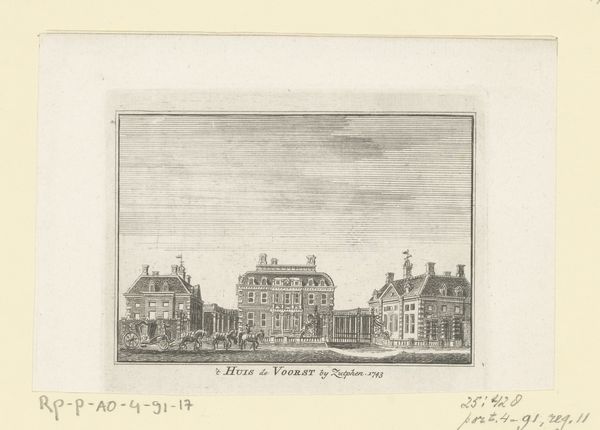
etching, engraving, architecture
#
baroque
#
etching
#
line
#
cityscape
#
engraving
#
architecture
Dimensions: height 219 mm, width 303 mm
Copyright: Rijks Museum: Open Domain
Curator: This detailed engraving, titled "Achterfaçade van een vorstelijk paleis," or "Rear view of a Royal Palace" was created in 1729 by an anonymous artist, meticulously rendered through etching and engraving. What strikes you first about it? Editor: The sheer precision! The line work is so delicate, almost mathematical. It has a stately, formal mood to it – almost chilling in its perfect symmetry. The stark monochrome palette reinforces that feeling, don't you think? Curator: Absolutely. The symmetry echoes the Baroque period's emphasis on order and control, reflecting the hierarchical social structures and power dynamics of the time. Consider how the palace, in its imposing grandeur, physically embodies and reinforces royal authority. Editor: The use of line definitely creates a sense of depth and three-dimensionality, even without color or shading in the modern sense. You can really sense the architectural space. How did this play into its original intended use? Curator: It was likely intended as a preparatory design or record. These engravings often served as architectural documents, spreading the styles and designs throughout Europe and shaping aristocratic tastes. It speaks to an era where power was visually asserted through grand architectural projects. Editor: The engraving medium must have also allowed for efficient reproduction and distribution of this design. Were these primarily used for architectural proposals or more of a commemorative practice to document royal achievement through built environment? Curator: Both! Prints such as these served multiple functions: disseminating design ideas amongst architects and patrons, celebrating building projects as symbols of prestige and power, and standardizing design principles across vast territories and classes. The work almost feels like a blueprint. Editor: A blueprint of social control, perhaps. Seeing this palace frozen in monochrome makes you consider how constructed identities shape entire periods of art history and lived realities. Curator: It truly illustrates how deeply aesthetics and ideology intertwine. Editor: It's impressive to appreciate the balance between strict planning and artistry in this composition, even today. Curator: And to be reminded how art always tells us more than we initially see.
Comments
No comments
Be the first to comment and join the conversation on the ultimate creative platform.
